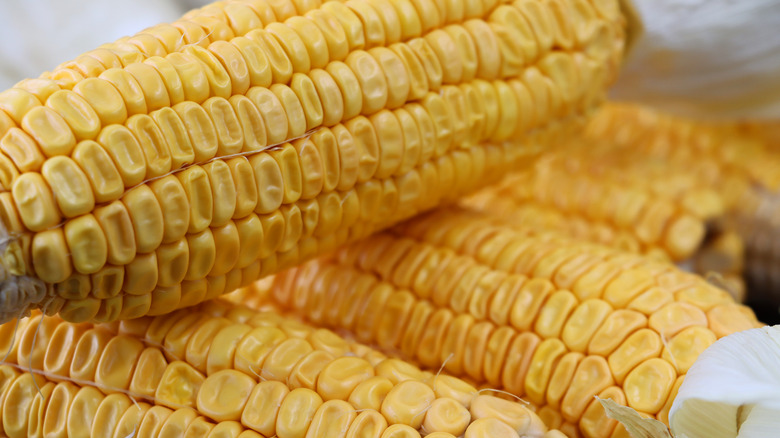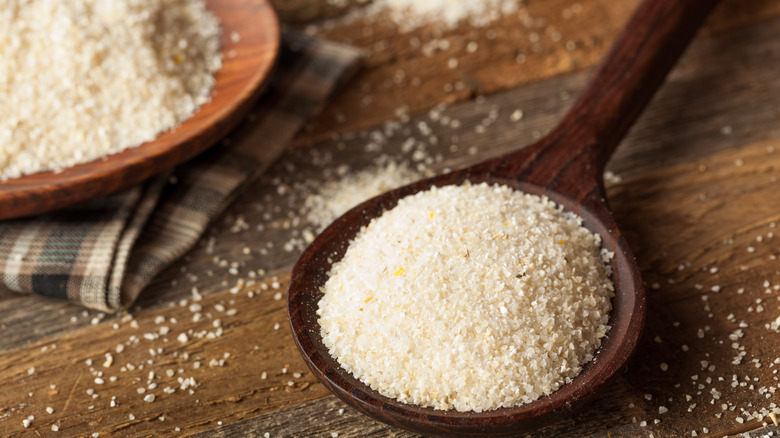The Reason Dent Corn Isn't Eaten Straight From The Cob
Corn is a staple ingredient in so many dishes, from classic corn chowder to loaded cornbread casserole. As such, we tend to think of corn as a singular monolith of sweet, golden kernels that can be eaten grilled, baked, buttered, or even raw. This is not the case, however, for dent corn, a variety of the vegetable that is far less suited to your dinner table thanks to its distinctly less appetizing flavor and texture.
Dent corn is the most common type of corn grown in the United States. It has a similar appearance to the sweet corn you find at the grocery store, apart from the noticeable dents in the kernels that give it its name. Dent corn tends to grow better compared to sweet corn, largely due to its superior hardiness and pest resistance. Unfortunately, what it possesses in resilience it lacks in edibility. The raw, whole kernels of dent corn are far less sweet than the corn we typically eat, and have a tough, starchy texture. This doesn't mean it isn't used for culinary purposes, though. You probably have dent corn in your kitchen right now without even realizing it, as it is used in the making of many other food products.
What is dent corn used for?
Dent corn may not be delicious off the cob, but it can be processed into a wide variety of products that help make our everyday food worth eating. Dent corn is the type of corn used to make corn flakes, grits, masa, and many corn-based snack foods thanks to its ability to be processed into cornmeal. It also goes into kitchen essentials where it is less visible, such as corn oil and high fructose corn syrup.
It is additionally worth noting that the dent corn that doesn't make it to our kitchens still plays an important role in our food system. Actually, 93% of this corn variety is used to feed the animals we eat, and another portion of it goes toward making ethanol, which is often used to fuel the vehicles needed to transport food around the country. So, while we may not be chowing down on dent corn during our next picnic, we can still appreciate it in all the other ways it contributes to a delicious, nutritious meal.

